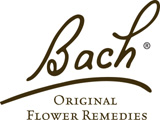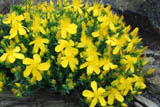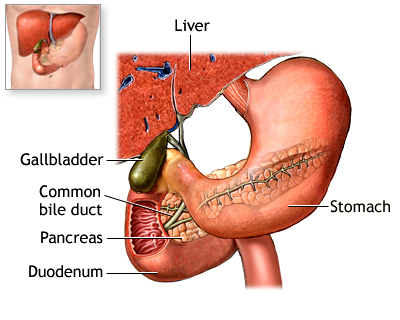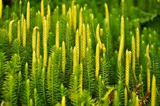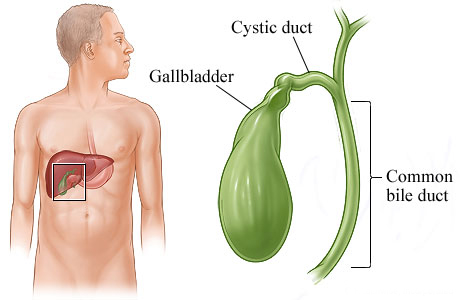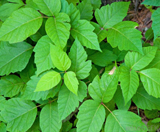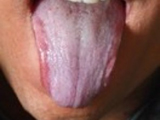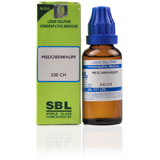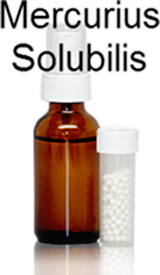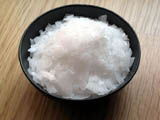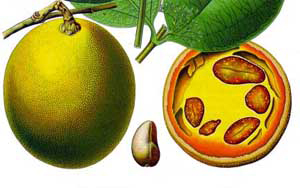Homoeopathy
Terminal cases
Editor’s note
These cases are from the diary notes of a Professor of surgery who mastered homoeopathy — a background which facilitates unique insights into one of the most sensitive areas of medicine. It is interesting that the doctor had a spurt of terminally ill cases in a short span of time. This type of ‘meaningful coincidence’ has been often observed in the field of psychotherapy (see the writings of C. Jung). One reason for this could be that the illness is not only an experience for the patient but also for the treating physician, whose personal outlook and philosophy of life is often moulded by his psychological environment, that is, the patient.
Case 1
A case of Acute Lymphoblastic Leukemia
This was an eleven year old child, daughter of an allopathic doctor who developed acute lymphoblastic leukemia with dilated cardiomyopathy and congestive cardiac failure.
Some time in September 1990, she had been treated at the Tata Cancer Hospital Bombay, with the usual anti-cancer drugs. She was on maintenance therapy of tablet Methotrexate and tablet Purenatol.
The first relapse occurred in April 1993 before she could begin her sixth cycle. She survived this relapse but developed a second one while still on oral maintenance therapy, in December 1994.
Her C.S.F. showed blast cells more than 3000 per hpf and the bone marrow showed suppressed erythropoisis and myelopoisis with 80% of lymphoblasts.
In this condition she was brought to me on 03-01-1995 with petechial rashes, fever, stomatitis and difficulty in eating.
She was taking tablets of Decadron orally. There were hardly any guiding homeopathic symptoms except for a craving for spices, pungent things, ice creams and cold drinks.
She was constantly thirsty and felt chilly.
She also suffered from abdominal distension which was ameliorated by belching. There was marked irritability. She demanded that her father be always with her, could sleep in any position but preferred to sleep with limbs flexed, on the stomach.
She was the youngest child with an older brother and sister with whom she had a good relationship. She often complained of nausea and joint pains. She seemed to like cats and wanted to be carried. She preferred to be alone or with family members and was disturbed by the slightest noise.
When she came to me her haemoglobin was only 58% despite blood transfusions. WBC - 6000 / cu mm with 90% atypical blast cells. L - 9%, N - 1%, ESR - 1.
It was difficult to decide the remedy but as there was a strong preponderance of a sycotic miasm (Grandparents: Psoriasis) and from the paternal side a Tubercular miasm, I began with Thuja 6 BD for four days along with a preparation of Bach flower remedies against cancer i.e. Mimulus, White chestnut and Crab Apple.
I have found these Bach flower remedies helpful either independently or with homoeopathy in all malignancies. Four days later the father reported that the patient was going into a pre-comatose condition. She developed fever ranging from 99 degree F to 102 degree F. 6 doses of Opium 200 were given two hourly. The child improved with the second dose, got up, demanded fluids, spoke to her parents and slept peacefully.
She ate her food. There was no fever by the next morning. There was oozing of blood from the gums with excessive perspiration on the scalp. Thus, a single dose of Calcarea Carbonicum 200 was given.
The next day there was a rise in the temperature, a petechial oozing area on the lip along with petechial rashes on the thighs. She complained of considerable pain in the right shoulder and lower limb. Two days later she was much better and the pain was less. So no medicine was given.
The fever recurred but there were no more petechial haemorrhages. Arthralgic pain would come suddenly and cease suddenly. On the 15th of January there was a sudden deterioration. She was dyspnoeic with a rapid pulse of 130/ min and temperature of 102 degree F.
There were no arthralgic symptoms. She appeared quite pale and my suggestion for blood transfusion was flatly rejected by her father who said,
“I don’t want to see my daughter further tortured and it is not going to help.”
The next day a minor bout of epistaxis occurred. A constant temperature, foul smell from the mouth, probably due to a right lower molar tooth abscess.
Silica 6c and a mouth wash of Calendula and Hypericum dilution was advised.
On the 19th the condition became more disturbing. She developed dyspnoea, was hardly eating or drinking.
There was a jerking of the limbs in sleep and a constant demand that her parents be by her side. Strangely enough her father remarked that she wanted to come to my clinic constantly.
One dose of Phosphorus 200 dissolved in water was sent.
By the evening, the temperature was normal, there was no fresh bleeding, though she was slightly drowsy and had one sour vomiting in the evening.
The next day the child was brought to my clinic. She had vomited 4-5 times with red streaks of blood. Her pulse was about 140/min and respiration 53/min. Extremely pale, she seemed to have a staring look, demanded air and fanning. She was restless and would cling to her father or to me. Though quite anxious she answered coherently.
I realised that the child was going to pass away and gave Carbo Vegetabilis 200 two doses half hourly and told the father to take her home.
I too followed them with a colleague who had also been observing the case throughout.
She was in a stage of extreme restlessness, wanting to be on the lap of her father, had a frightened and staring look and demanded sips of water. I put Arsenicum Album 200 in water and gave it to her. Within a few minutes her restlessness quietened and she passed away peacefully, conscious almost to the end.
The only satisfaction that I got from the treatment of this case were the words from her father,
“Doctor, I am happy that your medicines gave her relief throughout and a peaceful end.”
What more could I ask in this case? The child lived for only two weeks after she came to me. Though most of her disturbing complaints were ameliorated, no impact on the inevitable course of her malignant condition was possible.
Case 2
A case of malignancy of the second part of the duodenum
This 18 year old college going student, reported to me on 11-04-1994. The history narrated by his father was that all his complaints started three months ago.
Intractable vomiting after a bout of fever was his main complaint. Endoscopy revealed a growth occupying the whole lumen of the second part of the duodenum. The biopsy showed adenocarcinoma. An exploratory laprotomy immediately after endoscopy was done. The growth was seen to involve the whole lumen of the second part of the duodenum, pancreas, lymph nodes, and mesentery.
A by-pass gastrojejunostomy was performed. The post-operative period was uneventful and the patient was sent home. He came to me on 11-04-1994.
He was of a reserved nature, could not tolerate cold; liked his food hot, desired sweets and sour things, ice creams and warm milk. Though fond of his father he was in awe of him. Outside the family he had very few friends. According to his family he was very punctual and neat. He liked sympathy and consolation and wanted someone to be near him especially in the dark. He had a tendency to stammer before beginning a sentence. While in the consulting room he kept moving his legs restlessly. According to his father, he was of a miserly temperament.
Except for diabetes there was no other miasmatic history from the family’s side nor any relevant history in his childhood or infancy to account for his malignancy.
12-04-1994 Given Lycopodium 6 B.D. for 10 days.
Iscador Q.U. with Cuprum series II injections was prescribed every day for a month.
03-05-1994 Apart from a spasmodic cough he seemed to be improving.
A second course of Iscador was begun. I gave him a single dose of Lycopodium 30.
30-05-1994 Carcinosin 30 single dose
10-06-1994 Iscador Inj.
Lycopodium 200 single dose
23-06-1994 Fourth course of Iscador was given. He had an occasional cough and fever.
09-07-1994 Gastroscopy revealed that the growth was still seen in the second part of duodenum but the anastomosis was functioning properly.
By this time the patient had put on weight inspite of the transient fever and occasional cough and was attending his classes.
04-08-1994 Fifth course of Iscador
Cough was aggravated by lying on the right side.
Treatment: Phos 30 single dose as an intercurrent.
09-08-1994 Hb — 8.2 gms, RBC — 3.1 million per cu mm, ESR — 65mm at the end of one hour.
Treatment: Carcinosin 200 single dose.
19-08-1994 Cough almost gone.
12-09-1994 Eighth course of Iscador
No cough, no fever, Appetite normal.
Treatment: Carcinosin 200 single dose
28-09-1994 Well. Ninth course of Iscador.
He continued to remain well till 31-09-1994 His Iscador injections could not be given as they were not available.
16-11-1994 Cough returned with coryza.
Treatment: Carcinosin 200
23-11-1994 Condition more or less the same. He is attending college.
Treatment: Lycopodium 200 single dose.
08-12-1994 Itching and yellow discolouration of conjunctiva.
Bilirubin — 9.6, ESR — 68mm at the end of 1 hr.
It appeared that he was developing liver secondaries.
Treatment: Lycopodium 6 a few doses, Cardus mariannus QT 10 drops B.D.
18-12-1994 Alkaline phosphatase — 14.4 units, SGPT and SGOT — Normal, ESR — 98mm at the end of one hour, Hb. — 8.6 gms.
Treatment: Cholesterin 30 TDS, Myristica QT 5 drops QID and Iscador.
A repeat case history taken by Dr. Agarwal (a homoeopathic colleague) at this time did not reveal anything more except that the patient desired fried egg, ice cold water and sweets. The tongue was coated white and strangely enough he dreamt of travelling and was anxious regarding his studies. Blood tests done on 16-01-1995 were: Hb — 7.8 gms, ESR — 132mm, S. Bilirubin — 25.8 mgs.
Despite his apparent jaundice, he was mobile, eating well but not going to college for fear of what his friends would say.
Due to his desire for eggs, I gave a dose of Calcarea Carbonicum 200. Unfortunately the parents failed to report back and probably took recourse to Ayurvedic medicine. He passed away in the month of February 1995.
Discussion
Here we see the result of Homoeopathic treatment in a case of malignancy. How much benefit was due to Iscador and how much by Homoeopathy cannot be judged, but in such cases one does not stand on ceremony. As the parents could afford Iscador the patient had nine such courses.
I am still at a loss to find out why at such a very young age this boy so rapidly developed an adenocarcinoma of the duodenum, when there was nothing in his family background or life to give rise to such a condition.
Case 3
Obstructive jaundice in a case of carcinoma of the gall bladder
Mr. S. aged 55 years reported on 04-01-1995 with the history that he was admitted in the Railway hospital with a diagnosis of obstructive jaundice. Subsequent investigations revealed that he had adenocarcinoma of the gall bladder. According to the report of an abdominal scan, the growth had already involved the porta hepatis, liver substance, peri-pancreatic region and retroperitoneal lymph nodes. Additional multiple gallstones were also revealed. A biopsy performed at Bombay revealed adenocarcinoma of the gall bladder. He initially had a percutaneous transhepatic drainage followed by a ten Fr. teflon endoprosthesis in the hepatic duct. The stent was reported to be functioning well and was expected to work for 6 months.
Past History: Perforated ear drum right side with childhood otorrhoea. He had small pox as a child.
Family History:
Mother — Operated for gall bladder stone 25 years ago.
Father — Expired when the patient was 6 years old. The cause was unknown.
One brother and one sister — hypertensive.
He was a person who could not tolerate heat. He was very punctual in his habits. Irreverence for time upset him very much. He liked to work and had many friends. Basically of a calm disposition he was fond of reading. If discipline was not maintained he got upset. He was very fond of neatness. Sympathetic, he liked to dwell on nature and find her secrets. He had a sound sleep and did not remember any dreams. His thirst was normal but he drank a little at a time. He craved coconut water, ghee, sweets and sour things.
Being intelligent, the patient was aware of his problem but could not explain why he suddenly developed this disease.
Treatment: Single dose of Sulphur 1M.
13-01-1995 He said his sleep was better and he felt more energetic.
Cholesterin 3x BD was given.
17-01-1995 Reported sudden pain in the sternal and intercostal region which began the previous night. Chest pain was intermit tent but there was no vomiting or sweating.
He seemed worried about his children.
Seeing his anxiety a few doses of Aconite 30 were given.
25-01-1995 Sudden lumbar pain the previous night, he is unable to lie flat on the back.
- Better by sitting or slow walking,
- Chilly.
Treatment: Rhus tox 200 x 3 doses.
26-01-1995 Pain better but complained of bitter taste in the mouth. Thirst increased, not passed stools.
Treatment: Bryonia 200 x 3 doses
28-01-1995 Suddenly developed hiccoughs at night with cough and pain in the liver region, unable to expectorate. Thirsty, dryness in the mouth, taking sips of water.
Chill and shivering with fever for half an hour which came down spontaneously with sweating. There was a white coating on the tongue.
Treatment: Antimonium Tartaricum 30 and Arsenicum Album 30, a few doses.
29-01-1995 Though he was better the previous night, his relatives admitted him in the railway hospital as he complained of low backache. He was muttering in delirium and gave only incomplete answers to questions.
There was fever with chills. Drank a little water.
At the Railway hospital he was given anti-pyretics, calmpose etc.
31-01-1995 Still at the hospital.
B.P. 100/60 mm of Hg, thirsty for cold drinks, constantly changing position, burning in the stomach, desired ice cubes, thick coating of tongue.
Treatment: Phosphorus 30 x 3 doses
Relatives reported that he slept well with the second dose but the hiccoughs which had stopped started again. At this time the case was seen by Dr. H.H. Agarwal, my younger colleague, as I was out of station.
On seeing the following:
Red sand in the urine, hiccoughs, thick coating on tongue, aggravation from evening to night; Lycopodium 6 x 7 doses, one dose every hour was advised till the morning.
He seemed to sleep better with each dose of Lycopodium. Lycopodium 30 was given at night also.
The next day he wanted to go home, saying that he was going to die. He was nervous and cried while talking. There were jerks in the limbs and he was asking his visitors to forgive him.
02-02-1995 S. Bilirubin — 3.4mg%, S. Creatinine — 1.5mg%, Blood urea — 123mg%, Urine — Bile salts and bile pigments present.
He was discharged by the railway doctors saying that they could not do anything much. He was seen at home by Dr. Agarwal and was advised Lycopodium 200, to be taken eight hourly.
03-02-1995 Seen at home by me and Dr. Agarwal.
Visibly jaundiced, muttering in delirium with weakness, hiccoughs, increased thirst and drowsiness.
Treatment: Lycopodium 200 again single dose.
04-02-1995 Sticky mucus, difficult to expel in throat. Satisfied by holding ice cubes in the mouth. Waking at 2.30 a.m. due to hiccoughs.
Treatment: Cuprum Arsenicum 200, one dose was given.
05-02-1995 Hiccoughs stopped but he had vomiting after drinking water though he could tolerate cold drinks and coconut water. He complained of thick stringy expectoration from the throat.
Treatment: Kali Bichromicum 30 x 6 doses 3 hourly, sent.
He was admitted to the homoeopathic hospital in the evening for intravenous therapy, as he could not take adequate fluids.
06-02-1995 I saw him at his residence. He was sleeping on his abdomen and craving for cold drinks.
Treatment: Medorrhinum 200 single dose was given at 11 a.m. and by 8. p.m. he was much better. The sticky sputum was much less. He slept well although the sleep was slightly disturbed due to intermittent cough.
07-02-1995. There was a strong craving for ice yet in general he was deteriorating. He was anxious, nervous and talking about death, wanting family members to be by his side.
Treatment: Phosphorus 200 single dose.
08-02-1995 Condition more or less the same, intermittent hiccoughs still disturbing him.
09-02-1995 Report by Dr. Agarwal:
Patient is restless, has incontinence of urine and is thirsty. Fever previous night, does not answer questions properly.
Treatment: Arsenicum Album 30 x 5 doses 3 hourly.
10-02-1995 No improvement in tremors of limbs and speech.
Treatment: Carcinosin 200.
Reports: Bilirubin — 4.0 mg, Blood urea — 121 mg.
At 7 p.m. he developed oedema of the feet. Cough subsided, no fever. Trembling of the limbs. The patient was going into hepato-renal failure. There was still stringy saliva. The symptoms were worse at night, thirst for cold water present.
Treatment: Mercurius solubilis 200 single dose.
11-02-1195 to 14-02-95 He was given Cholesterin 3 X, Myristica 6 and Hydrastis 30. We passed a Ryles tube to feed him but there was no further improvement.
16-02-1995 Condition same.
17-02-1995 Urine output less though the flapping tremors were better. He was better in bouts mentally but developed severe abdominal pain at night and Colocynth 30 was given.
18-02-1995 Made an attempt to commit suicide by jumping out of the gallery in the early hours of the morning and repeated this attempt after three hours. He said he did this due to the pain.
Aurum 200, one dose, was immediately given along with Colocynth 30 SOS and Passiflora 6 drops.
He still complained of hiccoughs and infrequent urination. Marked irritability, yet sensitive, weepy and resigned to his fate. Oedema of the feet was still there. Thirst more, urine output less. We gave him Mercurius solubilis 30 x 5 doses followed by Myristica 30 x 3 doses.
21-02-1995 He passed away at 8.20 p.m.
Retrospectively, it is surprising that the stent began to get obstructed so soon. All the subsequent symptoms that he developed were due to renal and hepatic insufficiency. Such cases have to be treated not only on a day-to-day basis but even more frequently. The whole aim is to relieve the patient of his distressing complaints so he can pass away as peacefully as possible at his own residence.
It is not possible to prescribe a single remedy and expect it to work all the time.
Cases of this type coming to me have been many and it is because of the help of my colleague Dr. Agarwal and other assistants that it has been possible to treat such cases palliatively, when they have been declared untreatable by all allopathic doctors.
Case 4
A case of carcinoma of breast with liver and abdominal secondaries
The brief history of this case was narrated to me by a medical student who happened to be a distant relative of this patient, Mrs. A.S.P., a 44 years old lady hailing from a place near Sangli.
The student remarked that this patient had undergone many chemotherapy sessions for an infiltrating duct carcinoma of the breast operated in 1990, and was under chemotherapy from the Tata Cancer Hospital in Bombay. She had developed liver secondaries and abdominal lymph node secondaries. The gross complaints narrated by the student were:
— severe vomiting,
— abdominal distension,
— constipation,
— oedema of the feet,
— breathlessness.
The patient had personally not come and no other information was available. I gave Carcinosin 200 with Kali phos 12X, 2 tablets QID to be given to the patient for two weeks.
Report on 17-01-1993
— vomiting less,
— intake of food more,
— retaining fluids and milk.
Treatment: A single dose of Carcinosin 200 and Kali phosphoricum 12X, 2 tablets QID for another two weeks.
On 05-02-1993, the husband reported his wife’s condition:
— abdominal distension less,
— no vomiting.
He revealed an interesting fact about his wife: she had miscarried in 1977, had itching of the skin of breast in 1984 and that the lump appeared in the right breast in 1990.
Other relevant features narrated by the husband were that his wife was easily upset and angry, would shout, abuse and then weep, would sulk and cry but would be relieved only if her husband consoled her. She was of a dominating nature, easily felt insulted and would still remember old and fancied insults. Working as a school teacher, she would not tolerate injustice and would talk and retort back to her seniors. She was more or less normal with regard to neatness and punctuality.
— averse to company,— suffered from scanty and early menses,
— worse by heat and was particularly hungry at 10 a.m.,
— had aversion to sex and desired salt and at times sweets.
She seemed to be afraid of thunder, lightning and robbers.
Treatment: Carcinosin 200 single dose and Kali Phosphoricum 12X, 2 tablets QID for one month.On 05-03-1993, the patient herself reported
—two months after starting her treatment with me.
She had 18 cycles of chemotherapy before homoeopathy and had been told by her previous doctors that nothing more could be done and she should go home and await her end.
On P/A examination there was a 5 finger nodular liver enlargement, hard, with doubtful aortic lymph node secondaries, no free fluid, no oedema of the feet and no neck glands.
She herself remarked that she felt that the size of the liver had reduced and she was not breathless, she could retain fluids with a normal appetite.
Treatment: Carcinosin 200 single dose followed by Natrum mur. 200, single dose one week later, as her constitutional treatment.
On 03-04-1993 Much better.
Treatment: Natrum muriaticum 200 x 1 dose with SL
03-05-1993 Much better.
Treatment: Natrum muraticum 1 M, one dose.
03-06-1993 Treatment: SL
03-07-1993 Treatment: SL
She had already resumed her duty as a school teacher.
15-07-1993 Reported in person.
Liver condition was the same. No other complaints except mild backache.
Treatment: Carcinosin 200 x 1 dose and a week later Natrum Muriaticum 1 M x 1 dose.
15-08-1993 Treatment: Natrum Muriaticum 1 M x 1 dose.
Blood picture on 28-08-1993 Hb — 10 gms, RBC — 4.8 million per cu mm, ESR — 10mm at the end of 1 hour.
Treatment: Carcinosin 1 M x 1 dose followed by Natrum Muriaticum 1M x 1 dose, a week later.
04-10-1993 Treatment: Carcinosin 1 M x 1 dose.
Natrum Muriaticum 1 M x 1 dose.
01-11-1993 Treatment: Carcinosin 1 M one dose followed by Natrum Muriaticum 10 M one dose.
16-11-1993 She reported weakness, pain in the feet, itching of body.
Treatment: Carcinosin 1 M x 1 dose followed by Natrum Muriaticum 10 M x 1 dose.
Condition of the liver was the same.
16-12-1993 No appreciable change but she continued to work.
Treatment: Carcinosin 1 M one dose and Natrum Muriaticum 10 M one dose.
17-01-1994 Blood picture was: Hb — 12 gms, ESR — 22 at the end of 1 hour.
Treatment: SL up to 19-02-1994 along with a medicine for her liver which contained Cardus Mariannus and Chelidonium in lower potencies.
01-04-1994 Patient began to relapse.
— Abdominal swelling was increasing,— Nausea,
— Uneasiness,
— Headache,
— Breathlessness.
Treatment: Carcinosin 1 M one dose followed by Natrum Muriaticum 50 M one dose.
29-04-1995 Reported in person, and I could see that her remission was over and she was once again slipping.
Treatment: Ignatia 30 (as she seemed considerably disturbed)
— Distension of abdomen,— Nausea,
— Vomiting,
— Breathlessness,
— Belching,
— Craving for cold water and fanning.
She refused to get admitted here and she was sent back to her place with Carbo Vegetabilis 30 QID for one week.
08-05-1994 Report through a relative:
The patient was sinking, had become jaundiced, had enlargement of the abdomen and a reduced appetite.
As a last desperate measure I sent Cholesterinum 1M, one dose and a week later Calcarea Carbonicum 200 one dose and she pulled on till her final end on 20-05-1995.
Retrospectively, this was a case that was palliated by homoeopathy for nearly 28 months. She could go back to work for some time and at one stage I really felt that she could live for a longer time. Unfortunately, they were not in a position to buy Iscador which I had suggested.
As a spin off from this particular case, I have been receiving all terminally advanced malignancy cases from the area and nearby towns and villages where this patient stayed. Obviously, every system of healing has its limits and it is difficult to know what would have been the fate of this patient had she been given homoeopathy shortly after being operated.
Share with us (Comments, contributions, opinions)
When reproducing this feature, please credit NAMAH, and give the byline. Please send us cuttings.


